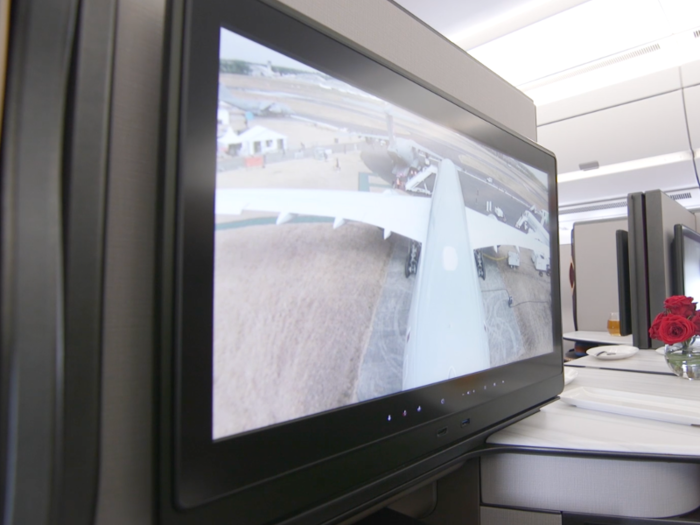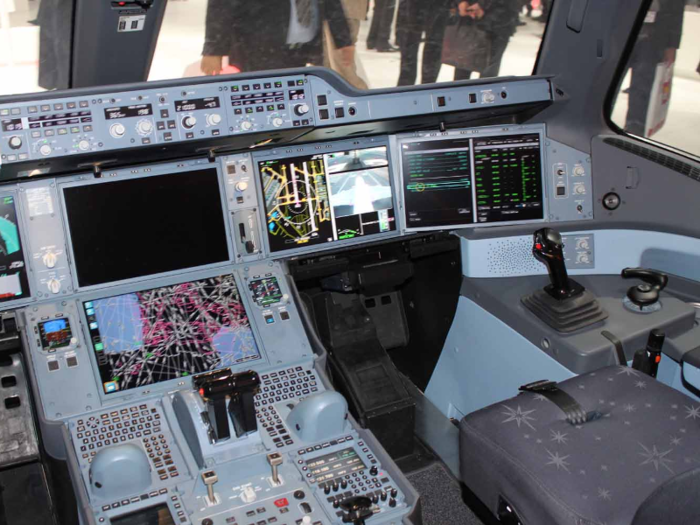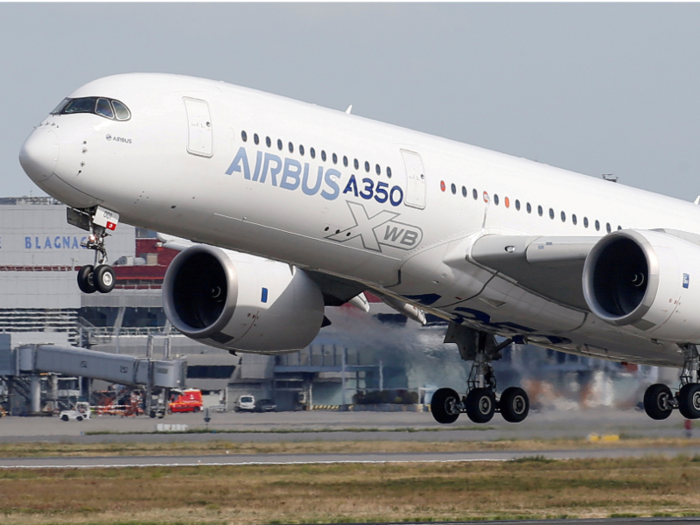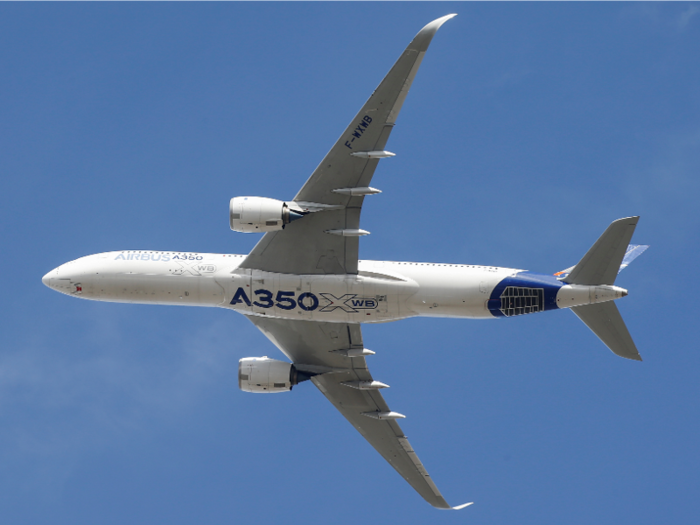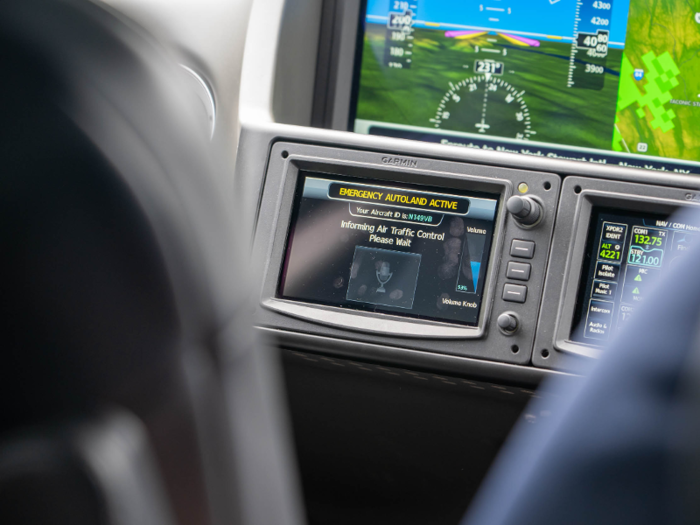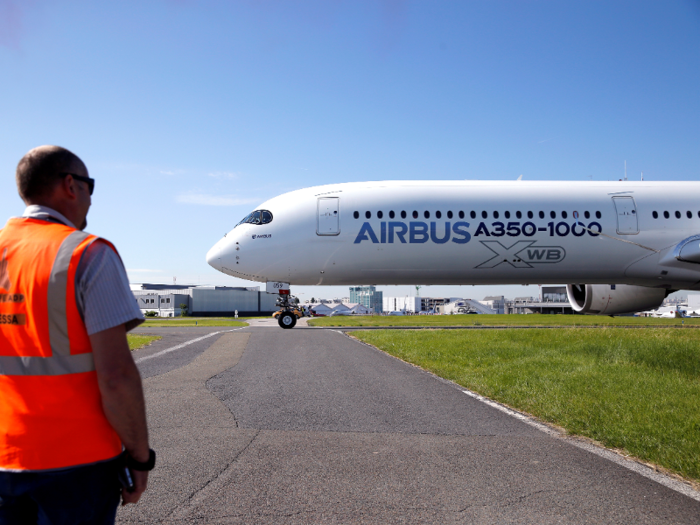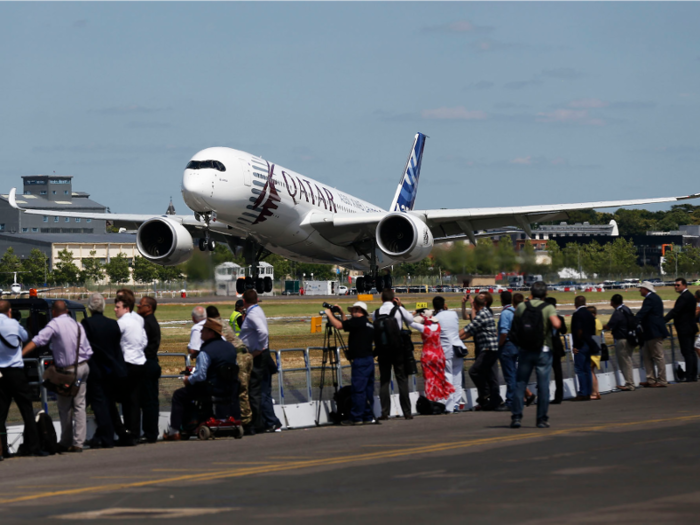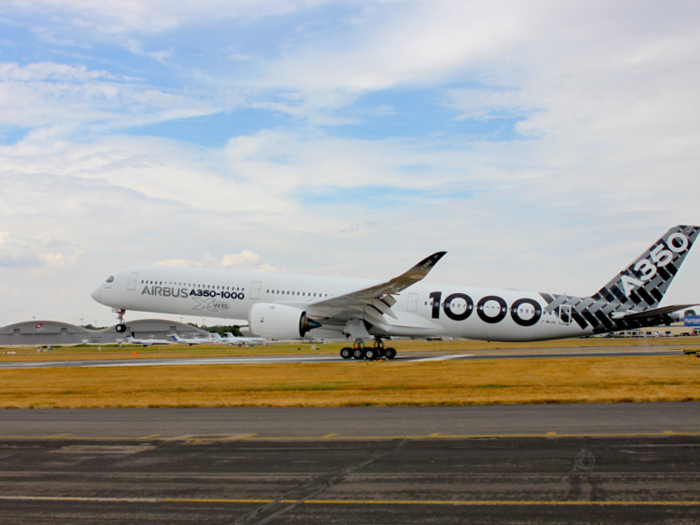The A350 typically has three exterior cameras installed both for viewing by the pilots and passengers.
The cameras are usually located on the tail, belly, and near the forward landing gear of the aircraft, though some airlines opted against the feature.
Similar to self-driving cars, the cameras were fitted with technology to recognize the runway so that it could keep a straight path when departing.
Wind and other runway hazards such as foreign object debris, or FOD, can potentially knock the aircraft off of the runway's centerline, which requires correction. Pilots must use the aircraft's brakes or the rudder to keep the aircraft on the centerline or risk the aircraft going off the runway's edge.
The test pilots reported that the aircraft automatically made those corrections without the need for pilot input, greatly reducing the workload during takeoff.
All they had to do was make sure everything was operating normally during the eight takeoffs.
The success of the takeoff is part of Airbus' Autonomous Taxi, Take-Off, and Landing project, which the manufacturer claims isn't to rush in a new era of self-flying planes, but to "explore autonomous technologies alongside other innovations."
By providing more autonomous functions for the aircraft, Airbus claims the pilots can focus more on flight management and decision-making instead of actually operating the aircraft.
Autonomous landings are nothing new with autoland being a feature on some of the world's most prolific passenger planes and even private jets.
Taxiing an aircraft, however, has historically been squarely a pilot-performed activity.
Though not as complex as taking an aircraft skyward, the taxi process is similar to driving as it includes traversing taxiways and ramp alleys, all while following the instructions of the air traffic control and avoiding other aircraft.
Now that Airbus has shown that the camera recognition technology can recognize the centerline of a runway, the next step would be recognizing the centerline of a taxiway.
The key would be to identify which centerlines apply to which taxiway and collision avoidance with other aircraft, as well as navigating tight spaces such as a parking stand.
Takeoff has similarly always been a pilot-required phase of flight; however, the act has been made easier with the help of autothrottle systems.
The takeoff/go-around switch found on modern airliners help control throttle on takeoff, aiding the pilot focused on controlling the aircraft's flight path and altitude.

